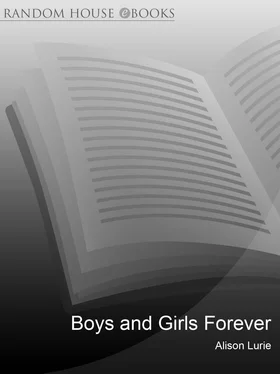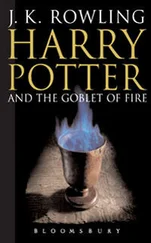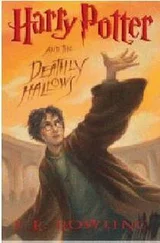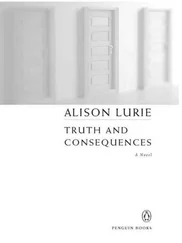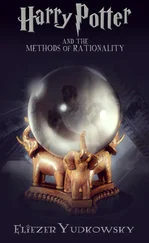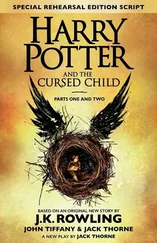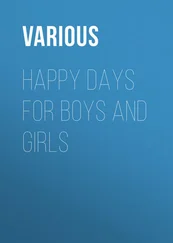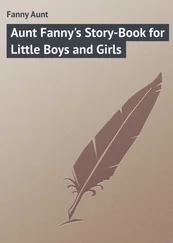Long years pass, and Inger only escapes from the toads and snakes after a good old woman, on her deathbed, remembers hearing Inger’s story as a child and pities her.
I was also deeply disturbed by one of Andersen’s most famous tales, “The Little Mermaid,” in which the heroine gives up her voice and agrees that every step she takes will feel like walking on knives, so as to have the chance of attracting the love of a prince whom she first saw at his birthday party on board a ship. When he finds the Little Mermaid on the seashore, dressed only in her long green hair, he adopts her as a kind of pet. But, like the wellborn young men and women whom Andersen loved, he does not think of her as a romantic partner, and marries a princess. The mermaid dies of grief; but after death she is transfigured, and joins the spirits of the air who “fly invisibly through the dwellings of men, wherever there are children.”
Though the Little Mermaid was presented as romantically admirable, I took her story as a warning against self-sacrificial and hopeless love. I did not realize that in this tale Andersen had foretold his own future. He would be rejected again and again by those he loved most, but unlike the Little Mermaid he never gave up his voice, and the best of the stories he told would survive for hundreds of years, “wherever there are children.”
LITTLE WOMEN AND BIG GIRLS: LOUISA MAY ALCOTT
A hundred and sixteen years after its publication, Louisa May Alcott’s Little Women was a smash hit again. The new film version set records (mainly, as one might expect, among women of various sizes), and the book, which has never been out of print, sold even more copies than usual. And at Orchard House, the Alcott homestead in Concord, Massachusetts, mobs of tourists created what were described as chaotic conditions.
In some quarters Little Women was also welcomed for its support of what are called “Christian family values.” After all, it is the story of a united and affectionate family living in a small New England town that has become part of the American myth. It features kind, wise, and loving parents, always ready with a warm hug and a moral lesson, and four charming teenage daughters who have never heard of punk rock or crack cocaine. Moreover, the book is American history as well as myth: it is based on Alcott’s own childhood and adolescence.
One era’s conservatism, however, may be the liberal protest of an earlier time. When it appeared in 1869, Little Women was in many ways a radical manifesto. Its author was an independent, self-supporting single woman in an age when, as Meg puts it in the book, “men have to work and women to marry for money.” 1More than forty years before women got the vote, Louisa May Alcott was a committed feminist who wrote and spoke in favor of women’s rights. In 1868, while she was creating Little Women , she joined the New England Suffragist Association.
Alcott came by her radicalism naturally. She was the daughter of what would now be described as vegetarian hippie intellectuals with fringe religious and social beliefs, and she spent nearly a year of her childhood in an unsuccessful commune. Her most famous book, Little Women , was equally radical in its time. Its central character, Jo March, has almost nothing in common with the suffering, self-sacrificing heroines of the best-selling girls’ books of the day—books like Charlotte Yonge’s The Daisy Chain (1856) and Susan Warner’s The Wide, Wide World (1861), both of which Jo reads in the course of the novel.
Developments in intellectual and social history, and even in human biology, have greatly altered the impact of Little Women . The unaffected asexual innocence of the four teenage March sisters, for instance, now seems almost unbelievable. In fact it would be inconceivable today, but not in 1868. Louisa May Alcott wasn’t portraying herself and her sisters as unnaturally immature, but as typical adolescents of a time when most women did not reach puberty until their late teens. In England, where the best records exist, the median age of menarche (first menstruation) in the 1830s was 17.5; by the 1860s it had fallen only to 16.5, and by the 1890s to 15.5. (Today it is down to 12.5.) 2A young woman born in the 1830s (like Louisa May Alcott and her sisters) who married at sixteen or seventeen, as many did, might be barely sexually mature at the time of the wedding.
Several explanations have been offered for this delay in maturation. The most common is that it was due to deficiencies in women’s diet, and to their lack of exercise. In the early nineteenth century it was generally believed that middle- and upper-class women needed different food than men did: more sugar and much less protein. The meals in Little Women emphasize sweets and carbohydrates: biscuits, pancakes, lemonade, gingerbread, pudding, fruit in season—and for a treat, ice cream, cake, and coffee. Meat and vegetables are hardly mentioned. Middle-class ninteenth-century women were also much less active than men, and the voluminous, constricting clothes they wore often made it difficult for them to exercise at all.
The typical early Victorian girl in fiction is almost totally innocent and without sexual drive. Her childlike modesty and timid tremulousness when approached even by a likable suitor can be seen as instinctive rather than flirtatious; it might be compared to the reaction of a ten-year-old today to the teasing of boy playmates.
Part 1 of Little Women , though it is set in the years of the Civil War (1860–64), was actually based on Louisa’s own adolescence during the late 1840s. When the book begins, Amy is twelve, Beth thirteen, Jo fifteen, and Meg sixteen; none of them appear erotically mature, though Meg is on the verge. Like a ten-year-old today, they are uninterested in boys except as pals, and in no hurry to leave home. When a suitable young man falls in love with Meg, Jo calls this “a dreadful state of things” 3and exclaims, “I just wish I could marry Meg myself, and keep her safe in the family.” 4The vehement childishness of this speech has puzzled some modern readers, and even led others to accusations of an unnatural lesbian attachment, but at the time it would have been seen as a comically outspoken expression of family loyalty.
Radical though she was, to some extent Louisa May Alcott softened and conventionalized her story for contemporary tastes. Her father, Bronson Alcott, was not, like Mr. March, a mild and kindly minister—he was a famous, and famously difficult, New England eccentric: unworldly, reserved, and emotionally unstable. Mr. Alcott, the self-educated friend of Emerson and Thoreau, allowed his wife, Abba, and later his daughters (especially Louisa) to support him while he traveled about lecturing in a high-flown but fuzzy manner on transcendentalist philosophy and educational reform. For a while the family lived in a utopian community called Fruitlands, where Abba and the older girls not only did all the domestic work but served as farm laborers, while Mr. Alcott wrote high-minded accounts of the enterprise.
Bronson Alcott was not only a social radical, but a religious one as well. He was drawn to what at the time were extreme beliefs: he was an abolitionist and a vegetarian, and supported the temperance movement. His educational ideas, based on the writings of Rousseau, were far ahead of his time. The Temple School in Boston, which he founded, had to close after three years when parents objected to the admission of a black pupil and to lectures that denied the divinity of Christ. In Little Women Jo is familiar with the religious radicalism of her time and troubled by it. One thing her future husband, Professor Bhaer, does for her is to restore her faith:
Читать дальше
